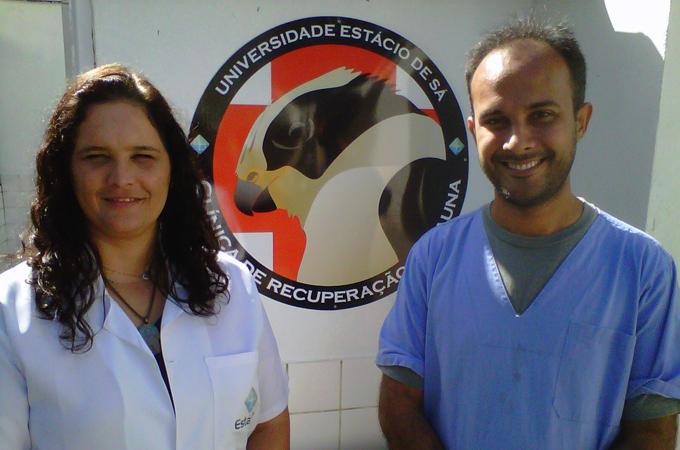Testing wayward penguins in Brazil
Oil samples collected from wayward penguins washing up in Brazil are being tested for the first time.

Rio de Janeiro – Every year around this time, without fail, penguins from frigid Patagonia wash up on hot, sandy Brazilian beaches.
Some are dead, others are alive but clinging to life after a long journey fighting strong currents that swept them more than 4,000km off course.
“They end up in Rio very tired and sick,” said Gabriela Heliodoro, a biologist at the Universidade Estacio de Sa animal recuperation clinic outside Rio that tries to nurse the birds back to health.
While it happens every year, about twice every decade more than the usual amount end up in Brazil.
“Every four or five years there is an increase in the penguin population in Patagonia and the competition for food amongst them increases,” Heliodoro said.
“And some of them take higher risks in their search for food and get far away from the coast, caught in ocean currents, and end up in Rio.”
So far this year over 100 penguins have been brought to the centre for treatment. Hundreds more have appeared on beaches further south in Brazil.

Gabriela Heliodoro and Jeferson Pires of the Universidade Estacio de Sa animal recuperation clinic [Gabriel Elizondo]
Increasingly, researchers have noticed the birds have oil stains embedded in their feathers. In previous years, the vets would have just washed the oil off the birds. But that meant a lot of potentially important data on where the oil came from was also washed down the drain as well.
So this year, for the first time ever, they are beginning to collect the oil samples for further testing.
“These oil samples are collected by us and passed to environmental protection officers and sent to a lab to find the ‘DNA’ of the oil,” said Jeferson Pires, a lead vet at the clinic that treats the birds.
“The objective is to try to learn from where exactly this oil came from – from which platform. And that is a way for them to know if there was a new oil spill in an area they previously didn’t know about.”
Until now, officials from Brazil’s environmental protection agency, known as IBAMA, have not had a databank of oil samples independent from what was given to them by the oil companies.
The oil collected from the penguins will help change that, and allow officers to cross check samples collected from the penguins against other samples they have.
Penguins being nursed back to health [Gabriel Elizondo]
Oil contains about 40,000 different chemicals, according to Alan Marshall, one of the world’s foremost experts on crude oil based at Florida State University’s National High Magnetic Field Laboratory.
Marshall conducted similar oil DNA sampling on samples collected from the BP spill in the Gulf of Mexico in 2010.
The exact makeup of each oil specimen can be pinpointed by scientists to determine the ‘DNA fingerprint’ of each oil sample.
The oil from the penguins is being tested at a laboratory at Brazil’s state-run energy giant Petrobras.
The information is particularly critical right now in Brazil, with numerous companies and hundreds of wells off the country’s Rio de Janeiro and Sao Paulo states coastline trying to tap into some of the largest deepwater reserves recently discovered anywhere in the world.
Most of the oil exploration takes place hundreds of kilometres off the coastline, in areas hard to independently monitor on a regular basis.
The environmental officials will soon have more data at their disposal to be able to determine if the oil the penguins are bringing with them to shore is natural seepage from the seabed floor, oil sheen released from a vessel, or from a platform leak, and if so, which platform.
All with the help of the samples inadvertently brought to shore by these wayward birds after a very long journey off course.
Follow Gabriel Elizondo on Twitter @elizondogabriel
With reporting from Maria Elena Romero